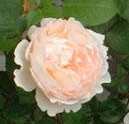 The old fashioned look of English roses fit beautifully into a cottage garden. English roses, as the term is commonly used, refers to a modern type of shrub rose that were bred so that they had many of the virtues of old garden roses but also had the modern trait of repeat bloom. Unlike hybrid tea roses that are cherished for their bud and high center, English roses are treasured for their fully open form which may be cupped, flat, or quartered. They may be single, double, or fully double, and are often fragrant. Many are large shrubs in this country and, unfortunately some are prone to disease, but their form is reminiscent of old garden roses and most of them are prolific bloomers.
The old fashioned look of English roses fit beautifully into a cottage garden. English roses, as the term is commonly used, refers to a modern type of shrub rose that were bred so that they had many of the virtues of old garden roses but also had the modern trait of repeat bloom. Unlike hybrid tea roses that are cherished for their bud and high center, English roses are treasured for their fully open form which may be cupped, flat, or quartered. They may be single, double, or fully double, and are often fragrant. Many are large shrubs in this country and, unfortunately some are prone to disease, but their form is reminiscent of old garden roses and most of them are prolific bloomers.
Here are five English roses that are apricot or peach in color that would be charming in a cottage garden. A range is given for bush size; generally, bushes grow larger in warm climates and larger in the United States than in Britain.
 Abraham Darby
Abraham Darby
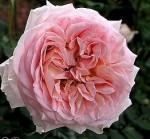 This tall shrub can be used in the back of the border or as a small climber. It is disease resistant, vigorous, and is easily found and widely grown. Large yellow buds open to light pink to apricot flowers that are borne in clusters of three to five. Each flower is four to five inches across, shallowly cupped and quartered, and has a strong fragrance.
This tall shrub can be used in the back of the border or as a small climber. It is disease resistant, vigorous, and is easily found and widely grown. Large yellow buds open to light pink to apricot flowers that are borne in clusters of three to five. Each flower is four to five inches across, shallowly cupped and quartered, and has a strong fragrance.
Abraham Darby was an eighteenth-century Quaker and iron master, important in the Industrial Revolution.
-
Color: Apricot and light pink with lighter edges.
Size of Bloom: 4-5”
Number of Petals: 70
Fragrance: Strong and fruity
Size of Bush: 5-10’ H x 3-6’ W
Disease: rust
Hardiness: Zones 5b-10b
 Ambridge
Ambridge
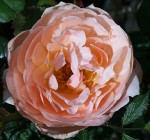 ‘Ambridge’ is a healthy rose that can be used as a low hedge, in the border, or in a container and makes a good cut flower. The flowers are deeply cupped with outer petals reflexed and are produced in flushes all season. The foliage is dark green with new growth being bronze.
‘Ambridge’ is a healthy rose that can be used as a low hedge, in the border, or in a container and makes a good cut flower. The flowers are deeply cupped with outer petals reflexed and are produced in flushes all season. The foliage is dark green with new growth being bronze.
Ambridge is the fictional village where the BBC serial, The Archers, took place.
-
Color: Apricot with a pale pink outer petals that fade to cream
Size of Bloom: 3-3 ½”
Number of Petals: Very double
Fragrance: strong, fruity
Size of Bush: 2-3’ H x 2.5’ W
Disease: Slight mildew
Hardiness: Zones 5b-10b
 Evelyn
Evelyn
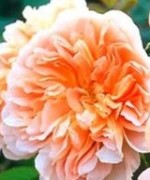 The yellow-orange buds open to deeply cupped flowers of apricot yellow that slowly fade to pink. The light green foliage is shiny but susceptible to black spot. The new canes are dark red covered with thorns.
The yellow-orange buds open to deeply cupped flowers of apricot yellow that slowly fade to pink. The light green foliage is shiny but susceptible to black spot. The new canes are dark red covered with thorns.
‘Evelyn was named for the Company Crabtree and Evelyn who used it for their perfumes.
-
Color: Apricot and pink
Size of Bloom: :4”
Number of Petals: Double
Fragrance: Strong and fruity
Size of Bush: 3-6’ H x 3-6’ W
Disease: Mildew, black spot
Hardiness: Zones 5b-10b
 Sweet Juliet
Sweet Juliet
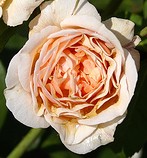 One of the most popular English roses in the United Kingdom ‘Sweet Juliet’ is a tall shrub with rather small flowers that are produced in flushes all season. The blossoms are shallow-cupped and have a heady, fruity, Tea-rose fragrance. The new growth is bronze but the leaves becoming light green with time.
One of the most popular English roses in the United Kingdom ‘Sweet Juliet’ is a tall shrub with rather small flowers that are produced in flushes all season. The blossoms are shallow-cupped and have a heady, fruity, Tea-rose fragrance. The new growth is bronze but the leaves becoming light green with time.
The rose was named after Juliet Capulets, of Romeo and Juliet fame.
-
Color: Apricot/apricot blend
Size of Bloom: 2.5”
Number of Petals: Double
Fragrance: Fruity, Tea-rose
Size of Bush: 4-6’ H x 3-4’ W
Disease: Mildew is a problem in the United States
Hardiness: Zones 5b-10b
 Tamora
Tamora
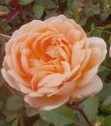 ‘Tamora’ is one of the best English roses and is widely available. It combines a compact growth habit with prolific blooming. The flowers are cupped, very full, fragrant, and are borne in small clusters. The foliage is semi-glossy and dark green; stems are thorny.
‘Tamora’ is one of the best English roses and is widely available. It combines a compact growth habit with prolific blooming. The flowers are cupped, very full, fragrant, and are borne in small clusters. The foliage is semi-glossy and dark green; stems are thorny.
Tamora was the queen of the Goths in Shakespeare’s Titus Andronicus.
-
Color: Apricot-yellow with darker center.
Size of Bloom: 3.5”
Number of Petals:: 41+
Fragrance: Strong myrrh
Size of Bush: 3-4’ H x 2-3’ W
Disease: Rust
Hardiness: Zones 5b-10b
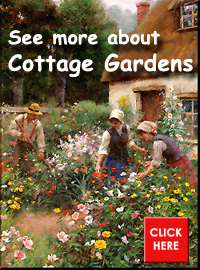 All of these roses can be grown in USDA hardiness zones 5b-10b. In the warm areas of the country they will grow larger than elsewhere and be more prone to mildew and black spot where heat is combined with humidity. This is nothing new for rose growers in the Southeast and should not be a deterrent. All of these roses are considered fairly easy to grow and good cultivation techniques will help reduce disease problems.
All of these roses can be grown in USDA hardiness zones 5b-10b. In the warm areas of the country they will grow larger than elsewhere and be more prone to mildew and black spot where heat is combined with humidity. This is nothing new for rose growers in the Southeast and should not be a deterrent. All of these roses are considered fairly easy to grow and good cultivation techniques will help reduce disease problems.